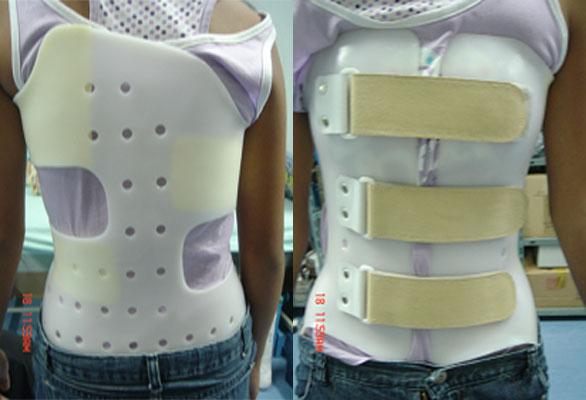Can A Scoliosis Brace Help with Adolescent Idiopathic Scoliosis

Did I hear the Orthopedic Dr. correctly?
Did he really say that my 13-year-old daughter needs to wear a brace for 23 hours a day?
She is so active, how will she place sports with the brace? What will other kids say about the brace? How are we going to get through this?
Do we have to get the scoliosis brace now or can we wait and see what happens?
The answer is “Maybe” It really depends on an a few factors:
1. your child’s growth & maturation (evaluated by Risser- (hip x-ray) or Sanders- (hand x-ray)
2. Your child’s Cobb Angle– where the magic number is LESS THAN 30°
It is important to note that the risky time period, where most curve progression occurs, is around puberty to one year after the first menarche. Researchers, Perdriolle and Vidal (spine 1985), found that curves under 30° progress less when entering the “risky time period”. However, a curve greater than 30°entering “the risky period” has an increased chance of progressing to the surgery range.
For this reason, it is important to keep the Cobb Angle below 30° before maturity and the “risky period”
If your child is in “the risky period”, then you don’t the luxury of waiting on the brace. You must act in the best interest of your child’s long term spine health. Schedule a consult with an Orthopedic specialist along with a Scoliosis Orthotist for a brace and begin Schroth therapy ASAP.
Remember, the brace is not forever. However, the impact of not wearing a brace can be the difference between surgery or no surgery in the future. ,
On the other hand, if your child is pre-puberty and less than 30°, you have time to wait and monitor the curve. Begin Schroth Exercises for posture correction and strengthening exercises.
For post-puberty and adults, the brace is used more for pain relief rather than decreasing the curve. Posture specific exercises and Schroth are beneficial for pain reduction and stopping the further progression of a mature spine.
For more information on Scoliosis visit the Scoliosis Research Society
Contact ScoliosisPTJax for a free discovery visit and information on Posture Specific Exercises and Schroth